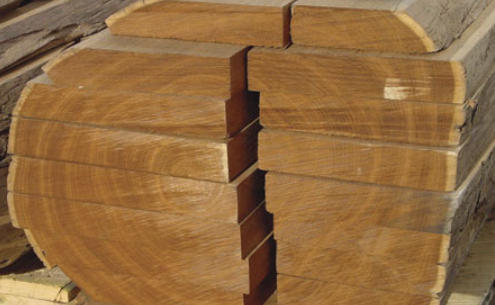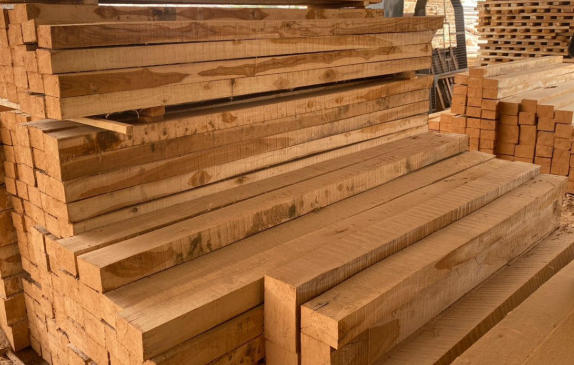










Content Menu
● Major Global Sources of Teak
>> Southeast Asia: The Birthplace of Authentic Teak
>> Latin America: Eco-friendly Teak Plantations
>> Africa: Expanding Teak Frontiers
● Teak Lumber Grades Explained
>> Grade A Teak: Premium Quality
>> Grade B Teak: Standard Construction Quality
>> Grade C Teak: Budget Option
● Choosing the Right Type of Teak
● Buying Teak Locally vs. Online
>> Advantages of Buying Locally
● Average Price and Cost Factors
● Importing and Exporting Teak Lumber
● Sustainability and Responsible Purchasing
● Maintenance Tips for Teak Lumber
● FAQs
>> (1) What makes teak lumber so durable?
>> (2) What is the difference between Grade A, B, and C teak?
>> (3) How can I confirm whether my teak is sustainably sourced?
>> (4) Can plantation teak last as long as Burmese teak?
>> (5) Where can businesses purchase bulk teak for OEM production?
Teak lumber is among the most prestigious and resilient hardwoods in the world, prized for its stunning appearance, rich golden-brown color, and unmatched weather resistance. Whether for yacht decking, outdoor furniture, or luxury interiors, teak remains a top choice across industries. This comprehensive guide explores everything about teak—its origins, grades, buying locations, sustainability, pricing, and how to make informed purchasing decisions.

Teak (Tectona grandis) is a tropical hardwood species native to Southeast Asia, particularly Myanmar, Indonesia, and Thailand. It is now cultivated worldwide in regions like Central America and West Africa, thanks to its high value and global demand.
Its unmatched durability comes from natural oils, tight grains, and silica deposits that resist rot, water, and pests even in harsh weather. It is especially favored in marine construction where water resistance is essential.
Key features of teak include:
- Density: Approximately 655 kg/m³
- Natural Oil Content: Provides a self-lubricating effect and prevents shrinkage
- Appearance: Smooth, honey-golden surface that darkens gracefully with age
- Durability: Resistant to fungi, warping, and cracking
Countries such as Indonesia, Myanmar, Thailand, and India dominate traditional teak production. Indonesian plantation teak (Perum Perhutani-certified) stands out for sustainability and premium quality, used extensively in luxury furniture and yacht decks.
Burmese teak, primarily from Myanmar, is regarded as the world's gold standard—dense, oily, and rich in color. Due to export restrictions, supply is now scarce, increasing reliance on plantation teak from Indonesia and India.
Costa Rica, Brazil, and Ecuador have developed mature teak plantations managed under FSC and Rainforest Alliance standards. Costa Rican teak features fine grain, light texture, and minimal imperfections, making it a go-to choice for sustainable projects.
Brazilian teak, by contrast, often has darker undertones with reddish patterns and is ideal for flooring or decorative woodworking.
Countries like Ghana, Nigeria, and Tanzania produce plantation teak at competitive prices. Although younger and less dense than Asian varieties, African teak offers exceptional affordability with fair durability—perfect for mid-range markets.
| Supplier | Location | Product Offerings |
|---|---|---|
| Advantage Lumber | USA | Plantation teak, S4S lumber, yacht decking |
| J. Gibson McIlvain Company | USA | FEQ marine-grade teak, architectural planks |
| Carib Teak | USA | Burmese and plantation teak in wholesale volumes |
| Woodworkers Source | USA | Retail teak boards, custom cutting |
| Cook Woods | USA | Kiln-dried teak lumber with polished surfaces |
| West Marine | USA | Marine teak for boats, rails, and trims |
| Valencia Lumber | USA | Genuine Burmese Teak for high-end construction |
| Brazilian Lumber | USA | Imported South American teak for decking |
Most of these distributors provide both domestic and international shipping, with many offering FSC certification and export documentation support.
The quality and cost of teak vary mainly by grading, which measures density, oil content, and position of wood within the log.
Grade A teak comes from the heartwood of mature trees, typically over 25 years old. It boasts a rich golden-brown tone, straight grain, high oil content, and zero knots. This grade resists weathering, decay, and insects without surface treatment.
- Durability: 50+ years
- Applications: Yacht decking, luxury furniture, architectural joinery
- Cost: Highest among all grades[1][2][6][8]
Derived from the outer heartwood, Grade B teak has lighter tones and a mixed grain pattern. While less oily, it remains durable when properly maintained.
- Durability: 15–25 years
- Applications: Semi-sheltered outdoor furniture, flooring
- Cost: Medium-range; suitable for cost-effective projects[6][7][1]
Grade C teak comes from outer sapwood or immature trees. It lacks oil and density, making it less weather-resistant. Often treated chemically to mimic higher grades, it is suited for interior or temporary furniture.
- Durability: <10 years
- Applications: Indoor low-cost furniture, veneers
- Cost: Economical, but higher maintenance[8][9][1][6]
When purchasing teak lumber, professional buyers assess several additional criteria:
1. Grain Uniformity: Straight, even grains indicate controlled growth and stability.
2. Moisture Content: Kiln-dried teak between 8–12% moisture performs best indoors.
3. Certification: Always request evidence of FSC or SLVK approval to avoid illegal logging.
4. Workability: Teak's natural silica content may dull cutting tools, but sanding and oil finishes yield beautiful results.
5. Color Consistency: Even honey hues without streaks indicate top-tier heartwood.

Visiting lumberyards allows woodworkers to inspect grain, texture, and defects firsthand. Local suppliers often provide cutting and planing customization on-site. However, local teak prices may be higher due to import tariffs.
Online suppliers such as Advantage Lumber, Carib Teak, and Hearne Hardwoods offer extensive selections with precise specifications, photos, and direct shipping. For large-scale buyers, these platforms often include custom milling and containerized freight for export.[12][13][15]
Teak's resilience ensures its use in diverse applications:
- Marine applications: Yacht decking, rails, and handrails for corrosion-free performance.
- Outdoor furniture: Naturally resists moisture, maintaining color and structural integrity.
- Flooring and interiors: Adds warmth and prestige to premium residences and hotels.
- Architecture: Used in staircases, cladding, doors, and fascia elements.
- Boatbuilding: Renowned for dimensional stability in wet environments.[19]
Teak's scarcity and high demand contribute to its premium pricing.
- Plantation Teak: Approximately $11–$20 per board foot.
- Burmese FEQ Teak: Upwards of $40 per board foot, depending on size and thickness.[5][20]
Additional factors influencing costs include:
- Grade of wood (A–C or FEQ to Select/Common classification)
- Kiln drying and surface finishing
- Origin and certification
- Shipping, duty, and import size
For wholesale or OEM purposes, sourcing Indonesian SLVK-certified plantation teak provides excellent stability, sustainability, and lower export tariffs.[21]
Importers and exporters must manage regulatory documentation and certification. The process includes:
- Compliance: Obtain FSC or SVLK documentation from certified exporters.
- Logistics: Choose *FOB* for local export or *CIF* for freight-inclusive international shipping.
- Inspection: Confirm physical attributes align with grade specifications.
Bulk importers often partner with plantation owners in Indonesia or Costa Rica, benefiting from lower transportation costs and reliable supply consistency.[13][12]
Due to past overharvesting, illegal logging remains a concern. Reputable suppliers must now comply with global sustainability protocols:
- FSC Certification (Forest Stewardship Council): ensures traceability from forest to retailer.
- SVLK (Sistem Verifikasi Legalitas Kayu): Indonesian legality verification system promoting forest protection.
- Eco-restoration programs: Many planters replant seedlings per cubic meter harvested to maintain ecological balance.
Supporting certified suppliers helps conserve forests and guarantees accountability within the global teak trade.[2][6][21]
While teak is low-maintenance, proper care maximizes its lifespan and appearance:
1. Cleaning: Rinse periodically with mild soapy water; avoid high-pressure washing.
2. Oiling: Applying teak oil lightly once or twice yearly restores sheen for aesthetic appeal.
3. Sanding: Light sanding removes oxidation for renewed surface smoothness.
4. Storage: If unused, store teak lumber in dry, ventilated spaces away from direct sunlight.
5. Sealing: Apply UV-protective sealers for outdoor furniture in tropical climates.
Following these steps ensures decades of service without compromising performance or beauty.[8]
Teak wood remains unmatched for elegance, strength, and longevity. Whether you need marine-grade lumber for yachts or FSC-approved plantation teak for garden furniture, options abound worldwide. Leading suppliers such as Advantage Lumber, J. Gibson McIlvain, and Carib Teak serve diverse customers with certified, high-quality teak suited for any budget and application.
When buying, always evaluate grade, origin, and certification. Sustainable sourcing not only guarantees product quality but also protects global forests—ensuring teak's golden legacy endures for generations.

Teak's natural oils, dense fibers, and silica deposits shield it from rot, insects, and water, making it exceptionally resilient.[5]
Grade A is dense heartwood with rich oils and consistent golden color; Grade B is outer heartwood with moderate durability; Grade C is young sapwood suitable only for indoor uses.[6][8]
Request FSC or SVLK certification documents when purchasing. Certified producers ensure legally harvested and eco-friendly teak.[2][21]
While Burmese teak offers unrivaled density, high-quality plantation teak from Indonesia or Costa Rica performs nearly as well when kiln-dried and well-finished.[21]
Manufacturers and wholesalers can partner with J. Gibson McIlvain Company, Carib Teak, or Brazilian Lumber for large export-grade shipments.[12][13]
[1](https://www.cyan-teak-furniture.com/faqs/materials-construction/what-are-the-different-teak-grades)
[2](https://www.goldenteak.com/tgrades.htm)
[3](https://mys-teak.com/understanding-teak-wood-grading/)
[4](https://www.countrycasualteak.com/our-quality-difference)
[5](https://www.advantagelumber.com/planteak.htm)
[6](https://www.cinnamongrandeur.com/group/grup-cinnamon-grandeur/discussion/5ec08133-ab09-4918-9909-69b659e210db)
[7](https://www.hineighbor.com/blogs/the-journal/grade-a-teak)
[8](https://www.patioproductions.com/blog/common-questions/grades-of-teak-the-quality-for-your-outdoor-furniture-design/)
[9](https://arbteak.com/blogs/news/abcs-of-teak-wood-can-you-buy-bad-teak)
[10](https://www.americanhardwood.org/sites/default/files/publications/download/2017-10/AHEC%20Grading%20Guide_AW_pages_0.pdf)
[11](https://buy.advantagelumber.com/collections/exterior-teak-boards)
[12](https://www.teakwoodsupply.com)
[13](https://caribteak.com)
[14](https://www.woodworkerssource.com/lumber/teak.html)
[15](https://www.cookwoods.com/products/teak-w198390)
[16](https://www.westmarine.com/teak-lumber/)
[17](https://valencialumber.com/product/teak/)
[18](https://brazilianlumber.com/product-category/teak/)
[19](https://www.hearnehardwoods.com/teak-burmese-lumber-2/)
[20](https://bestofexports.com/is-teak-wood-expensive/)
[21](https://www.goldenteak.com/b22/2024/11/19/which-country-is-the-largest-producer-of-teak/)